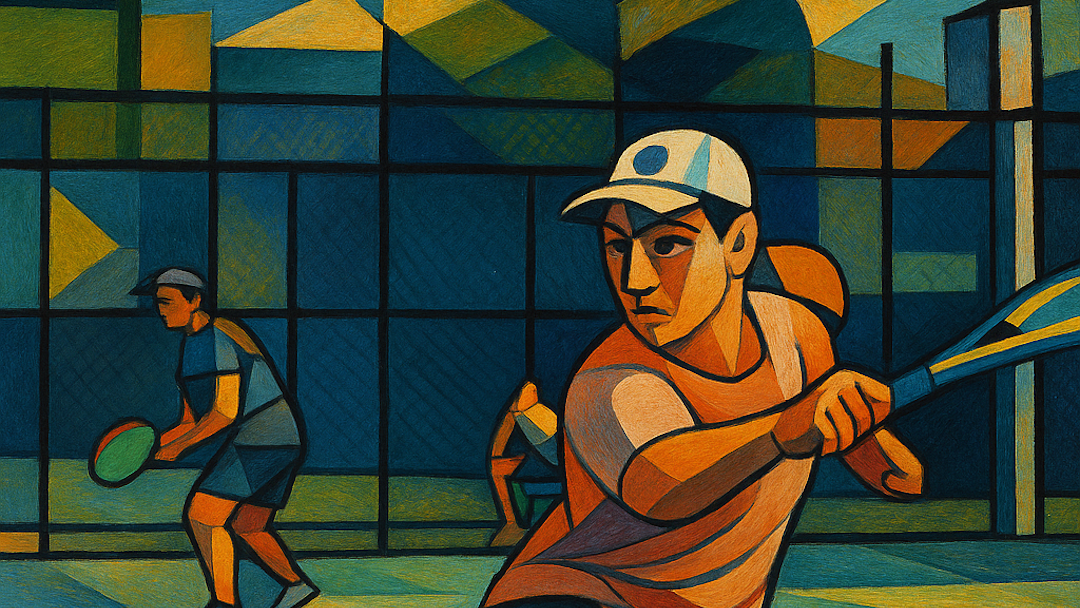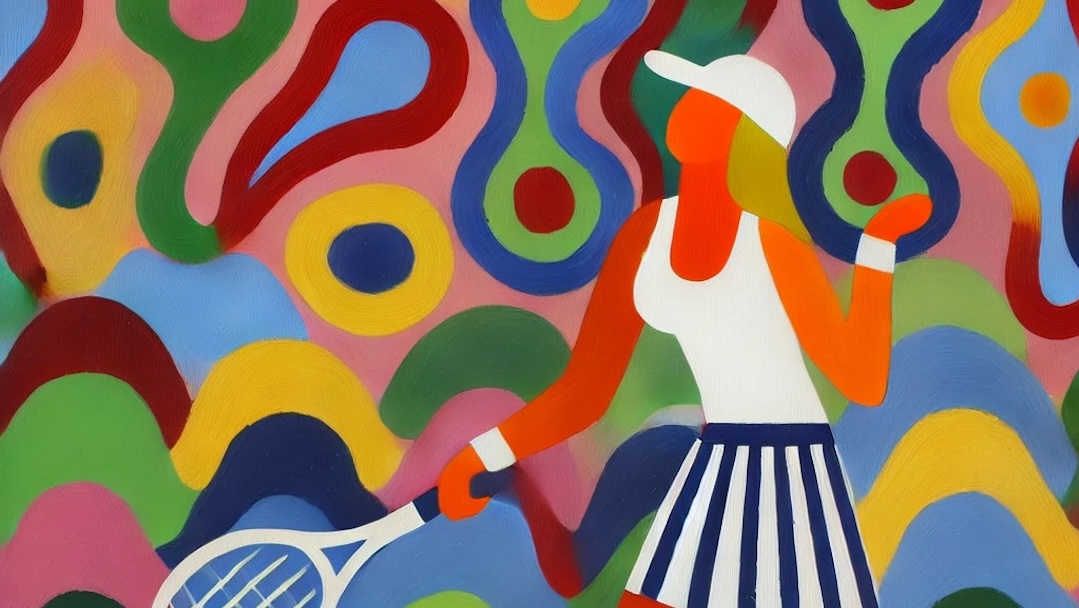Sometimes a little knowledge can be a dangerous thing. Information gleaned from books on tennis can be used to make you a better player. Alternatively it can be used to highlight deficiencies in your game that will never be corrected. Sometimes you just have to be who you are.
Smart shot selection is not my forte. There are actually two root causes for my failure in that area. First of all, there are a lot of shots that are widely regarded as low percentage that I consistently hit. I have extremely good touch that makes some of those shots possible. My working theory is that God gave me that as compensation for saddling me with ridiculously slow feet. I win a lot of points off unconventional shot selection.
The second root cause of my poor shot selection is… creativity. Those are the shots I aspire to hit, but my own success statistics don’t even come close to justifying the attempt. Yet… I still try. If you ever happen to pass by one of my matches and hear a plaintive cry of “Whyyyyyyyy?!?!,” that means that creative shot selection just cost me another point. We are all a work in progress.
Recently I reviewed Paul Fein’s great book, “The Fein Points of Tennis.” It is filled with a lot of great content on strategic and tactical tennis. It also contains a lot of sound tennis advice that I will struggle to implement. For example, repeated ideas that could lead to improved shot selection.
When I was reading Fein’s book, sound bites of statements that are the antithesis to Fein’s sound advice kept popping into my head. That brings us to a new shirt that I printed up over the weekend. In case you can’t read the fine print from the photo, it reads as follows:
I’m just too creative to be limited by Smart Shot Selection.
Teresa Merklin
I’m pretty sure this one will turn out to be quite the conversation piece.





Your description of shot selection reminds me of that line from the original Top Gun: “Son, your ego is writing checks your body can’t cash.” Been there, done that!
At every tennis lesson ever, I am asked “what do you want to work on?” I always say shot selection. It appears there is more than one of me around. Thanks for writing this.
Teresa has written a thought-provoking column encapsulated in the shirt message, “I’m just too creative to be limited by Smart Shot Selection.”
What is the connection between creativity and smart shot selection?
Several answers to this question are found in the subtitles of an essay titled “Six Keys to Smarter Shot Selection” in my instruction book, “The Fein Points of Tennis: Technique and Tactics to Unleash Your Talent.” These subtitles are: “Know Thy Own Game,” “Know They Own Form,” Know Thy Opponent,” “Know the Existing Conditions,” “Know the Right Shot in Challenging Situations,” and “Know the Perils of Over-hitting and Under-hitting.”
Let’s start with a truism. The most difficult shots in tennis, such as a drop volley or a between-the-legs, back-to-the-net “tweener,” require correct technique and considerable athletic ability. Let’s take the drop volley as an example of shot creativity.
If you know your own game and you’re honest and objective, you know whether you have ever hit a successful drop volley. If you have, perhaps it came during a volley drill. Even better, if it came in a practice match. But ask yourself: Do you have the confidence to drop volley in a USTA league match or a USTA-sanctioned tournament? And when you tried it, did it work? Do you have the confidence and skill to try it on a pivotal point in a close match?
The next question involves your form on touch shots in a given match or even a given set? Like Teresa, I’m a “touch player.” But on some days, I acknowledge that my touch is much better or worse than on other days.
Next, consider your opponent. If she is blazing fast and possesses wonderful racket skills, then drop shots and drop volleys may simply be too risky, unless they are terrific. Put differently, then the chances of success for these two shots become much lower.
A fourth consideration is the existing conditions. Remember that drop shots, which talented Teresa enjoys conjuring, and drop volleys are least effective on hard courts, especially fast hard courts. These shots also often backfire when the wind is behind you.
Challenging situations also present a dilemma for even the most skillful and improvisational drop volleyers. Should they try a drop volley against powerful passing shots? Against vicious topspin passing shots. When they’re positioned near the service line?
You get the point. Many of us enjoy nothing more than expressing our creativity. It’s fun, exhilarating, and ego-enhancing. When our creative shot wins a point outright, especially a big point, we’re in tennis heaven. We’ve demonstrated our athleticism, racket skills, and clever tactics.
The other side of the creativity coin, though, is not beautiful or glorious. We see that when we watch Nick Kyrgios and Benoit Paire try trick shots—between-the-legs half volleys, underhand serves, etc.—and fail miserably. Alert opponents pounce and often put their trick shots away. These “showboats” seem more interested in indulging their egos or entertaining than competing hard and winning.
My final point is that there are many variables to consider when you want to become “creative.” In my book, “The Fein Points of Tennis,” I could have inserted after almost every assertion the words, “everything else being equal” or something to that effect. That is precisely because everything else is rarely equal because there are so many variables. In fact, what makes tennis so challenging to play and fascinating to watch is that players must assess all these variables and make split-second shot selection decisions. Match statistics reveal whether your creativity—as expressed with drop shots, drop volleys, and other higher-risk, supplementary shots—succeeded or failed.
So there is nothing inherently contradictory or limiting between creativity and smart shot selection as the shirt message suggests. Roger Federer and Agnieszka Radwanska exemplified how both attributes can be combined brilliantly. Now teenage sensation Carlos Alcaraz is taking this to an even higher level with his jaw-dropping bag of tricks.
You must decide before and during matches how much creativity and what kinds of creativity will increase your chances of winning. If you get this aspect of “percentage tennis” right, opponents and observers will lavish praise on both your creativity and your smart shot selection.